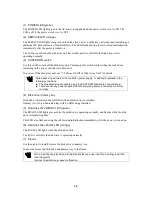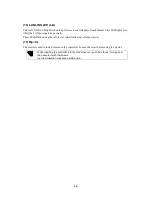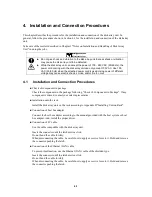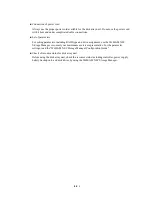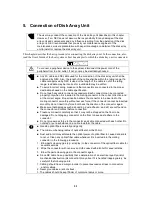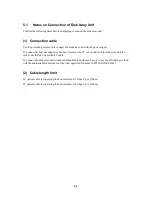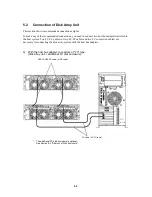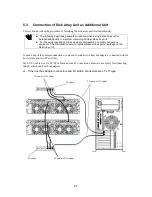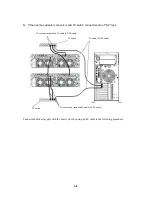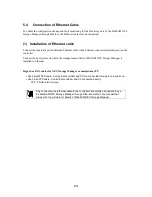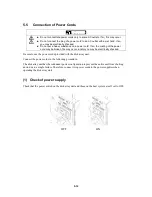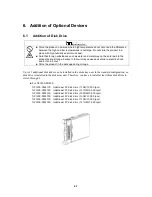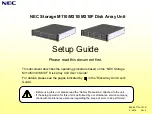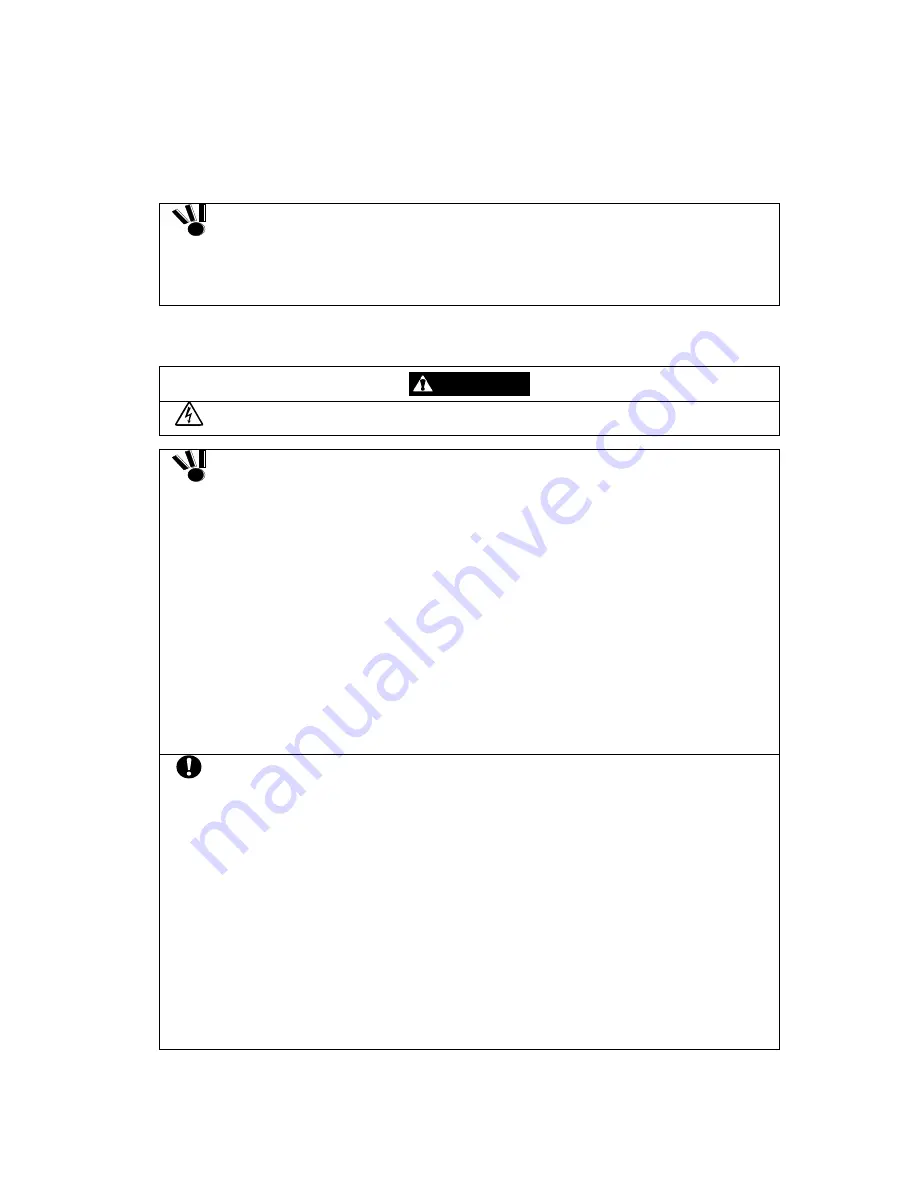
5-1
5. Connection of Disk Array Unit
The user may conduct the connection of the disk array unit described in this chapter.
However, if so, NEC does not assume the responsibility for any damage of the disk
array unit and components and any influence resulting from the operation of the disk
array unit. NEC recommends that you ask your maintenance engineer of the
maintenance service representative with expert knowledge on details of the disk array
unit to install or remove the disk array unit.
This chapter describes the basic procedure for connecting the disk array unit. In the connection, also
read the User's Guide of the host system or host bus adapter to which the disk array unit is connected.
CAUTION
To connect a peripheral device to the system, disconnect the power cord of the
peripheral from the AC outlet. If not, you may be electrically shocked.
Any FC cable and DE cable used for the connection of the disk array unit shall be
approved by NEC. Also, the length of the cable shall be within the rating range. If a
cable not approved by NEC is used or the length of the cable is out of the rating
range, read data may be incorrect or invalid data may be written.
To avoid incorrect wiring, make sure that connectors are connected to the proper
destinations based on the cable specification.
Do not push any cable connector excessively. Each connector can be connected
properly only when it is inserted to the mating connector in the correct direction and
at the correct angle. Proper insertion allows the connector to be inserted to the
mating connector smoothly without excess force. If the connector cannot be inserted
smoothly, do not insert it by force but check the direction of the connector again.
Make sure that damages such as buckling, dust adhesion, and dirt are not found on
the connector and contact before connection.
Treat any connector carefully so that it may not be dropped on the floor to be
damaged. Do not drag any connector on the floor to have dust adhere to the
connector.
Do not give excess force to the connector and cable connected with each other. Do
not step or put a substance on a cable to deform the cable.
Handle optical fibers carefully and gently.
The minimum bending radius of optical fiber shall be 30 mm.
Dust and/or dirt may attenuate the optical power of optical fiber to cause data errors
to occur. Clean any optical fiber cable whenever it is inserted into the mating
connector in the following procedure.
1. Blow parts cleaning gas (e.g. air splay) to the connector of the optical fiber cable for
several seconds.
2. Wipe the connector with non-woven cloth soaked with alcohol for several times.
3. Blow the parts cleaning gas to the connector again.
Since DE cable has a possibility that a deterioration of an electrical quality and/or
mechanical destruction (disconnection) may arise if it is handled inappropriately, be
careful of the following points.
1. Cabling should have a margin in order to prevent excessive stress to connectors
and/or cables.
2. Never give cables a jerk or stress.
3. The cables should be kept 50mm of curvature radius or more.

